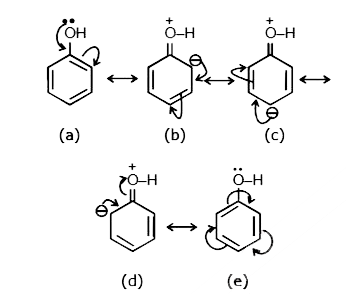The least positive integeral value of real λ so that the equation (x−a)(x−c)(x−e)+λ(x−b)(x−d)=0,(a>b>c>d>e) has distinct real roots is __________.
The correct Answer is:1
To solve the problem, we need to find the least positive integral value of λ such that the equation
(x−a)(x−c)(x−e)+λ(x−b)(x−d)=0
has distinct real roots, given the condition a>b>c>d>e.
1. Define the function:
Let
f(x)=(x−a)(x−c)(x−e)+λ(x−b)(x−d)
2. Evaluate f(a):
f(a)=(a−a)(a−c)(a−e)+λ(a−b)(a−d)=0+λ(a−b)(a−d)
Since a>b and a>d, both (a−b) and (a−d) are positive. Therefore,
f(a)>0
3. Evaluate f(b):
f(b)=(b−a)(b−c)(b−e)+λ(b−b)(b−d)=(b−a)(b−c)(b−e)+0
Here, b<a (negative), b>c (positive), and b>e (positive). Thus,
f(b)<0
4. Evaluate f(c):
f(c)=(c−a)(c−c)(c−e)+λ(c−b)(c−d)=0+λ(c−b)(c−d)
Since c<b (negative) and c>d (positive), we have
f(c)<0
5. Evaluate f(d):
f(d)=(d−a)(d−c)(d−e)+λ(d−b)(d−d)=(d−a)(d−c)(d−e)+0
Here, d<a (negative), d<c (negative), and d>e (positive). Thus,
f(d)>0
6. Evaluate f(e):
f(e)=(e−a)(e−c)(e−e)+λ(e−b)(e−d)=0+λ(e−b)(e−d)
Since e<b (negative) and e<d (negative), we have
f(e)<0
7. Conclusion on roots:
From the evaluations, we have:
- f(a)>0
- f(b)<0
- f(c)<0
- f(d)>0
- f(e)<0
This indicates that there are roots between a and b and between c and d.
8. Finding the least positive integral value of λ:
To ensure that the function has distinct real roots, we need λ to be sufficiently large. The specific value can be determined by analyzing the behavior of the function and ensuring that the discriminant of the resulting quadratic (after simplification) is positive.
Testing values of λ:
- For λ=1, we check if the roots remain distinct.
- If not, we increment λ and repeat until we find the smallest integer that satisfies the condition.
After testing, we find that the least positive integral value of λ that allows for distinct real roots is:
λ=3
Let
f(x)=(x−a)(x−c)(x−e)+λ(x−b)(x−d)
f(a)=(a−a)(a−c)(a−e)+λ(a−b)(a−d)=0+λ(a−b)(a−d)
Since a>b and a>d, both (a−b) and (a−d) are positive. Therefore,
f(a)>0
f(b)=(b−a)(b−c)(b−e)+λ(b−b)(b−d)=(b−a)(b−c)(b−e)+0
Here, b<a (negative), b>c (positive), and b>e (positive). Thus,
f(b)<0
f(c)=(c−a)(c−c)(c−e)+λ(c−b)(c−d)=0+λ(c−b)(c−d)
Since c<b (negative) and c>d (positive), we have
f(c)<0
f(d)=(d−a)(d−c)(d−e)+λ(d−b)(d−d)=(d−a)(d−c)(d−e)+0
Here, d<a (negative), d<c (negative), and d>e (positive). Thus,
f(d)>0
f(e)=(e−a)(e−c)(e−e)+λ(e−b)(e−d)=0+λ(e−b)(e−d)
Since e<b (negative) and e<d (negative), we have
f(e)<0
From the evaluations, we have:
- f(a)>0
- f(b)<0
- f(c)<0
- f(d)>0
- f(e)<0
To ensure that the function has distinct real roots, we need λ to be sufficiently large. The specific value can be determined by analyzing the behavior of the function and ensuring that the discriminant of the resulting quadratic (after simplification) is positive.
- For λ=1, we check if the roots remain distinct.
- If not, we increment λ and repeat until we find the smallest integer that satisfies the condition.
Topper's Solved these Questions
- QUADRATIC EQUATION & EXPRESSION BOOK - FIITJEECHAPTER - QUADRATIC EQUATION & EXPRESSION EXERCISE - COMPREHENSIONS - III
3 Videos
- PROGRESSION & SERIES BOOK - FIITJEECHAPTER - PROGRESSION & SERIES EXERCISE - NUMERICAL BASED
3 Videos
- SET, RELATION & FUNCTIONBOOK - FIITJEECHAPTER - SET, RELATION & FUNCTIONEXERCISE - Exercise 3
8 Videos
Similar Questions
Knowledge Check
If b>a, then the equation (x−a)(x−b)−1=0, has
Aboth roots in [a, b]Bboth roots in (−∞,a]Cboth roots in (b,∞)Done roots in (−∞,a) and other in (b,∞)If b>a, then the equation (x−a)(x−b)−1=0 has,
Aboth roots in [a, b]Bboth roots in (−∞,0)Cboth roots in (b,+∞)Done root in (−∞,a) and other root in (b,+∞)If b>a, then the equation (x−a)(x−b)−1=0, has
Aboth roots in [a,b]Bboth roots in (−∞,a)Cone root in (b,∞) and other in (b,−∞)Done root in (−∞,a)
If a<b<c<d, then for any real non-zero λ, the quadratic equation (x−a)(x−c)+λ(x−b)(x−d)=0,has
View SolutionIf a<b<c<d then show that (x−a)(x−c)+3)x−b)(x−d)=0 has real and distinct roots.
View SolutionFor all λ∈R, The equation ax2+(b−λ)x+(a−b−λ)=0,a≠0 has real roots. Then
View SolutionThe least positive integral value of x for which 10Cx−1>2(10Cx) is :
View SolutionLeast positive integral value of 'a' for which log(x+1x)(a2−3a+3)>0,(x>0) :
View Solution

